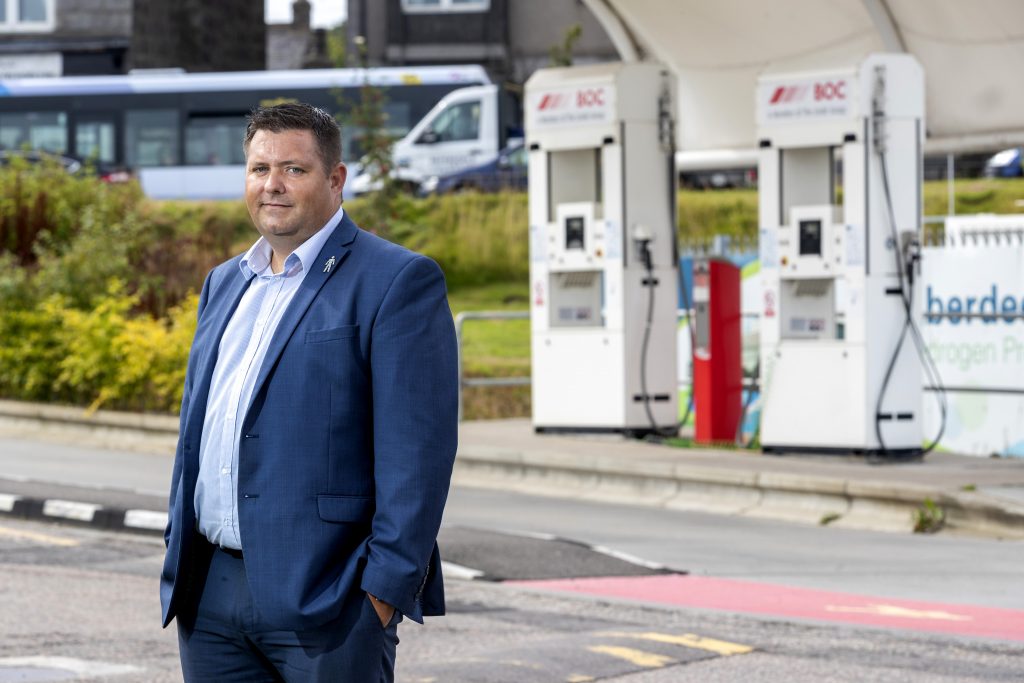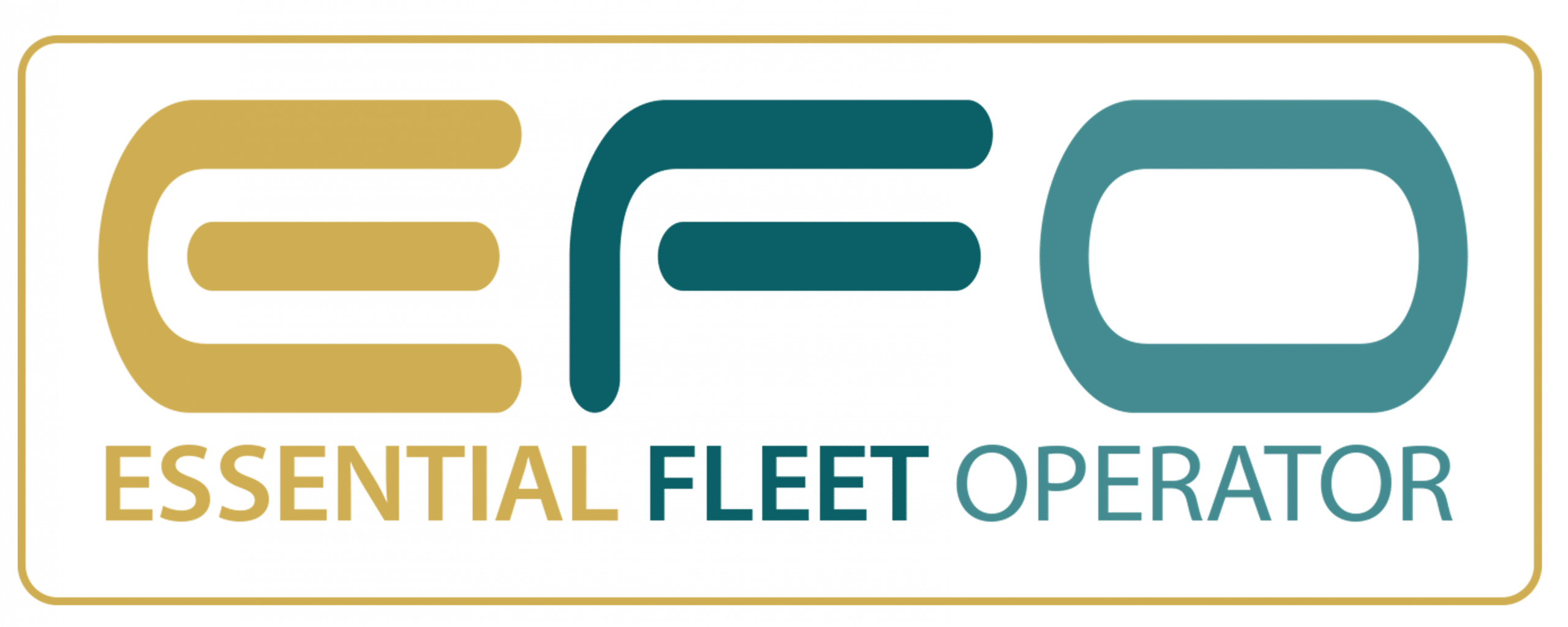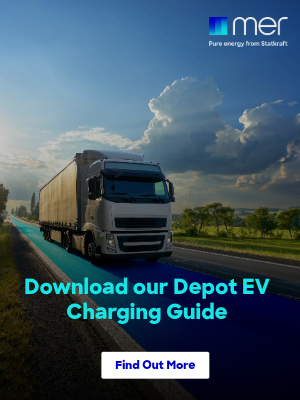Exclusive interview with Mark Griffin – BOC’s Hydrogen Market & Business Development Manager

What applications are there for Hydrogen use within the transport sector?
We can use hydrogen as a fuel for virtually any vehicle – from a refuse truck to a passenger train. Hydrogen vehicles are electric vehicles and, in many ways, similar to battery EVs – except the battery is replaced by a hydrogen store. A fuel cell uses the hydrogen to generate an electric current, which drives an electric motor to power the vehicle.
Hydrogen is versatile, for example BOC’s Kittybrewster refuelling facility in Aberdeen was originally designed to support the refuelling of single-deck buses. Today, it is available for private cars, local authority fleets, refuse vehicles as well as double-decker buses.
Are there any harmful bi-products or emissions generated during the manufacture / production process of Hydrogen and are fossil fuels involved in these processes?
Hydrogen is by far the most abundant element in the universe. It can be produced in several ways and is recovered as a by-product from various industrial processes. The two most common approaches are steam methane reforming (SMR) and electrolysis.
You can get hydrogen from natural gas – or methane – by a process called SMR. This involves heating natural gas with steam, usually with a catalyst, to produce a mixture of carbon monoxide and hydrogen. This method is the most cost effective and efficient way to produce hydrogen, but it does emit carbon as a by-product and relies on using natural gas.
Electrolysis, however, involves using an electric current to split water into oxygen and hydrogen. The cost of producing hydrogen by electrolysis depends on the cost of the electricity used in the process. When the electricity used comes from renewable sources, it generates a clean and sustainable source of hydrogen generating zero emissions from ‘well to wheel’.
Most people will know that hydrogen has explosive properties, so can it be transported safely or does it need to be generated closer to where it will be used?
BOC safely produces hydrogen on site at refuelling stations and also transports it to stations that do not have an onsite production facilities, on a daily basis. Our hydrogen infrastructure has numerous safety features built-in, such as automated plant shutdown in the unlikely event of a leak detection.
The refuelling process itself is similar to filling up a vehicle with diesel or petrol. There’s no need to wear PPE, and typically takes around 5 minutes to refuel a car delivering a range of 500km.
Within the transport sector the use of hydrogen fuel cell technology seems to be increasing but not at the same rate as electric battery technology – what do you think the main barriers for adoption are at the moment?
The barriers to adoption of electric and hydrogen vehicles are similar in that both need suitable infrastructure and vehicles.
Refuelling a hydrogen-powered vehicle takes place at a refuelling station, which is similar to a traditional petrol station. To maximise use of our hydrogen refuelling stations, we design them to enable different vehicle types to be refuelled from the same facility. Kittybrewster is a good example of this since it can refuel cars, buses and trucks.
The refuelling process is fast and delivers vehicle ranges of up to 500km. While there is more public infrastructure available to support battery vehicles, charging a car takes a lot more time to achieve the same range as refuelling with hydrogen.
There is another constraint facing battery vehicles, which is that charging a fleet or larger vehicles, like buses, takes a lot of power and can require grid upgrades, as the local grid must be able to support the increased power demands.
Whether a public authority chooses to operate battery or hydrogen vehicles, it will need to invest in new infrastructure. We are seeing increased interest from city councils in hydrogen as more people begin to understand that hydrogen is proven as an economically viable fuel for clean transport. When a council commits to developing a hydrogen refuelling station to meet its public transport aims, it quickly realises that it can be opened up for use by the public and for other local authority vehicles like refuse trucks.
BOC has over 25-years of experience developing hydrogen refuelling infrastructure. We are leading the UK’s drive to enable commercial and private hydrogen transport supported by a UK-wide refuelling network.
How does a hydrogen fuel cell technology compare in terms of efficiency in comparison with a lithium-ion batteries?
It’s difficult to comment on energy efficiency compared with lithium-ion batteries – there are many variables involved. However, fuel cells are often quoted as having an efficiency of 50-60%.
What users like about fuel cell vehicles is that they have long range, offer fast refuelling times, emit zero emissions and have no vehicle noise.
How long would it take to refuel a vehicle that works with a hydrogen fuel cell in comparison to charging a more traditional EV?
For a car, it takes about 5 minutes to refuel with enough hydrogen to enable it to travel 500km. For buses, the refuel time is less than 10 minutes, which is similar to the current refuelling regime and is considerably less time than EV charging.
Range and recharging times vary considerably for battery EVs. A few of the most modern car models can use a super charge station and achieve full charge in 40 minutes, however, home charging solutions take several hours.
Does a hydrogen fuel cell deliver continuous power, or does it diminish as the fuel is used and the cell becomes empty?
The fuel cell delivers power as long as there is hydrogen in the tank, with no loss of performance. In this regard, driving a fuel cell vehicle is just like driving a petrol or diesel vehicle; while there is fuel in the tank, the vehicle will drive as normal.
The future and uses
What type of infrastructure is required in order to scale up the production and availability of liquified hydrogen to meet future mobility needs?
The technology to do this is already available and we do have access to liquified hydrogen from Europe. As the demand for hydrogen increases, then it is possible we will see a liquification plant in the UK in the future.
To use the hydrogen for refuelling, however, it needs to be turned from a liquid back into a gas. This requires a Linde cryo pump and vaporiser at the refuelling station.
By design, BOC refuelling stations are modular, so if the method of hydrogen production is changed, the station can be modified accordingly. By taking this modular approach, we can adapt the refuelling station to scale up the hydrogen production by volume and source input (i.e. gas or liquid).
What is the future for hydrogen cell technology and hydrogen production in the UK – other than within transport what other applications could we see it used for within the next 10-20 years?
As well as transport, hydrogen fuel cells are used in stationary power applications today where diesel generators would otherwise be used. This can be seen in construction applications such as lighting and security towers as well as welfare cabins.
There is also a shift to replace the natural gas network with hydrogen, which will begin with small percentages of hydrogen being mixed into the grid, building up to 100% in the future. This will be used for applications such as heating and also to decarbonise industrial applications.
Hydrogen production also enables energy storage. With more renewables on the grid, grid operators face a significant challenge in balancing energy supply and demand. By using electrolysis to generate hydrogen, we can effectively store the renewable energy when it’s not required by the grid and use the hydrogen to generate power when it is needed.
Find out more visit www.boconline.co.uk/hydrogen




